FASHION MASTERMIND VEENA ADVANI
SPEAKING OUT ON AFFIRMATIVE ACTION

SPEAKING OUT ON AFFIRMATIVE ACTION
UN REPORT:
9 OUT OF 10 PEOPLE STILL HAVE A BIAS AGAINST WOMEN
BASED ON HER OWN CAREER EXPERIENCES, KAUR COACHES WOMEN TO ADVOCATE FOR THEMSELVES AND BECOME STRONG LEADERS
BASED ON HER OWN CAREER EXPERIENCES, KAUR COACHES WOMEN TO ADVOCATE FOR THEMSELVES AND BECOME STRONG LEADERS
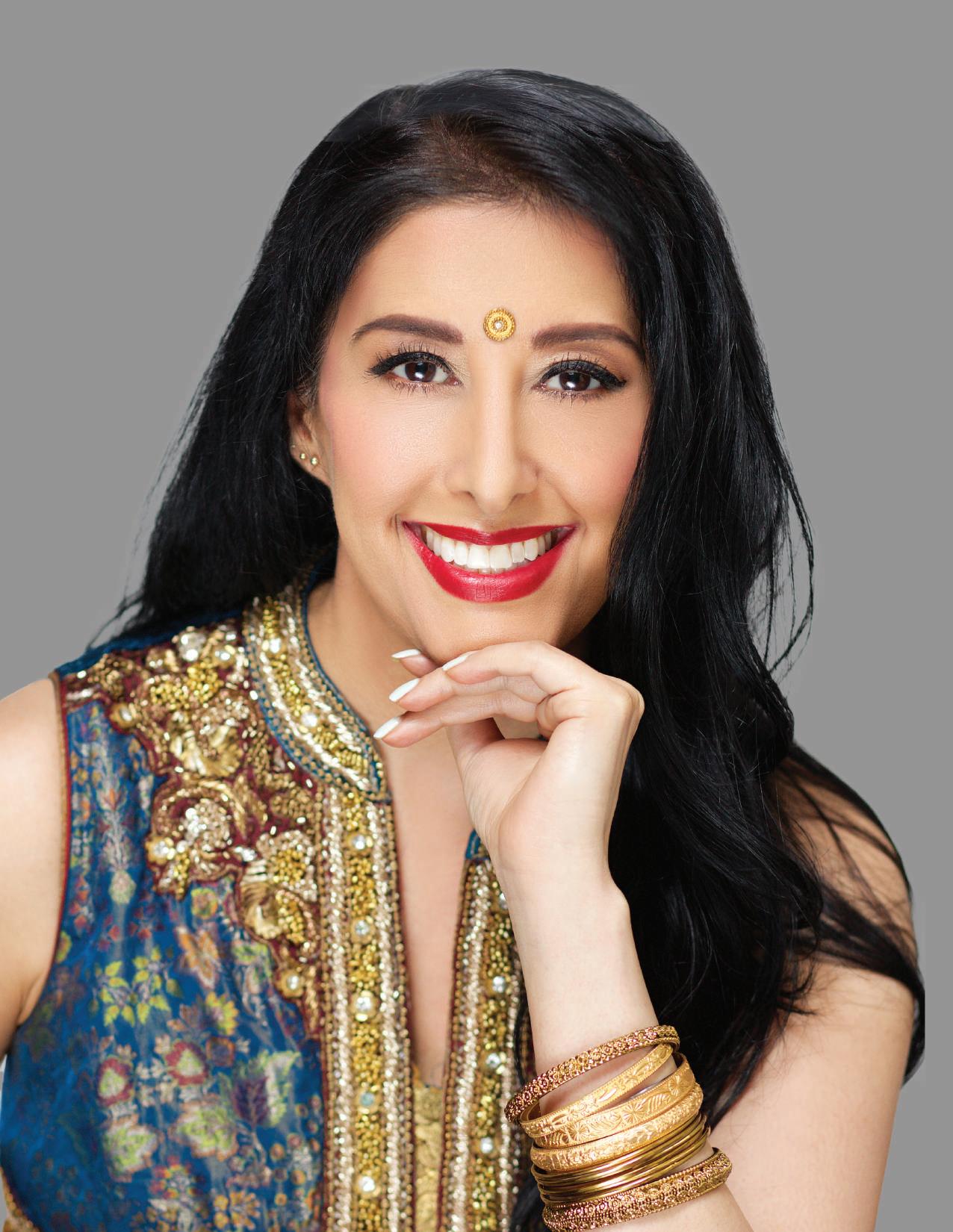

FOUNDER AND EDITOR-IN-CHIEF
SEEMA KUMAR
@seemanetwork
EDITOR
JESSICA DOWNEY
CREATIVE DIRECTOR
SAJID MOINUDDIN
DESIGN
HB DESIGN
EDITORIAL COORDINATOR
ROHINI KAPUR
WRITERS
MAUREEN PETROSKY
ABHIJIT MASIH
BINDU GOPAL RAO
@seemanetworks
LINDSEY GALLOWAY
FARZANA SURI
BRAND PARTNERSHIPS, DEVELOPMENT AND STRATEGY
ANJALI MANIAM
@seemanetwork
SEEMA™ ISSUE 08 | AUGUST 2023
EMPOWERING SOUTH ASIAN WOMEN GLOBALLY SEEMA KUMAR, FOUNDER
COPYRIGHT © 2022 SEEMA, JAYARAM, LLC SEEMA.COM
PUBLISHED AT P.O. BOX 814, PENNINGTON, NJ 08534
SUBSCRIPTION INQUIRIES: INFO@SEEMA.COM OR SEEMA.COM/ARTICLE/CONTACT-US TO SUBSCRIBE WRITE TO: Subscribe@seema.com
SPONSORSHIPS, PARTNERSHIPS, ADVERTISING, NEWSLETTER AND EVENT INQUIRES: INFO@SEEMA.COM
FOR MORE INFORMATION ON ADVERTISING
EMAIL: advertise@seema.com
Hard to believe, but August is here, and we are almost at the unofficial tail end of summer. In a few weeks we will be in “back to school” mode so let’s go make the most of what August has to offer including the longer days. So sit back and enjoy our jam-packed issue.
The August issue features stories of incredible South Asian women who are blazing new trails , including Risha Jasmine Nathan , a gastronomic game changer who is working to find solutions to unhealthy drinking water. We also feature Suman Gollamudi, who promotes Indian art forms and under whose guidance the Indo American Arts Council and organizes various cultural events to promote Indian art including the New York Indian Film Festival. In Indulge, we showcase Monica Ravichandran , who is making waves in the beauty world as a Sephora Squad influencer. Plus, we share the story of Veena Advani , a distinguished textile designer and fashion mastermind, who has worked with international fashion brands and her creations worn by supermodels and musical superstars.
O ur cover story features Neelu Kaur, who delves into the reasons why South Asians often struggle with selfadvocacy. A corporate trainer and leadership coach Neelu sheds light on how the communal South Asian culture, which promotes cooperation and sharing rather than of individual autonomy and personal freedom can impact South Asians in the workplace. In a competitive environment, Neelu says she had to re-learn how to balance collective team success and self advocacy, especially during performance reviews. She is now helping individuals, teams, and organizations with sessions and workshops focused on leadership, mindfulness, and burnout management.
For those who love food and like to stray from the traditional palate we bring you options for fast, healthy Indian fusion for busy weeknight meals with a little help from Patak Patel. We pair it with a feature on the American-born Indian winemaker Shalini Sek h a r, who is hard at work making wine for herself under her own label Ottavino.
The summer heat and humidity is going to stay with us a bit longer, and to banish the shine and grime during the
sweaty summer months , we suggest five cleansers that wash it off to give you a fresh -faced start. For the fitness enthusiasts, we bring tips and instructions by Coach Heena Laeeque who works to help South Asian women stay active and keep their core strong.
O n a more serious note , we focus on a recent report about bias against women. According to a new United Nations report, nine out of 10 people still have a bias against women. The issue can only be tackled by bringing it to the public eye and we hope that we are doing a small part in addressing this kind of violence and stigma through our platform.
A nd finally, to get us ready for the back to school season, we bring you three functional options of grown-up backpacks.
We hope you enjoy yet another densely packed issue with diverse stories of and for South Asian women we set foot into August and hope that you make best use of the fleeting warm summer days.
• Seema Kumar, Founder, SEEMA Network •

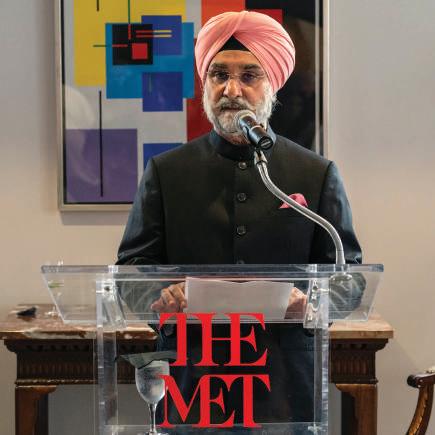

Like so many South Asian women, Neelu Kaur wasn’t taught to advocate for herself, which was a major disadvantage in the American corporate culture. After learning lessons the hard way, she dedicates her life to helping women avoid the same pitfalls



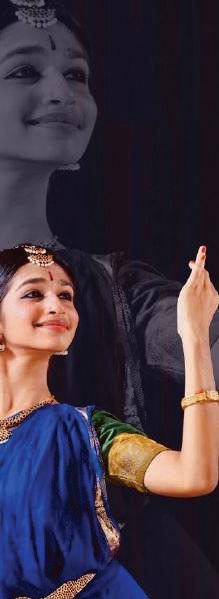

The newly minted “Tree & Serpent” exhibit at The Met in New York City showcases the origins of Buddhist teachings

The ensemble group tour celebrates its first studio album in more than 45 years

Two South Asian podcasts for your listening pleasure
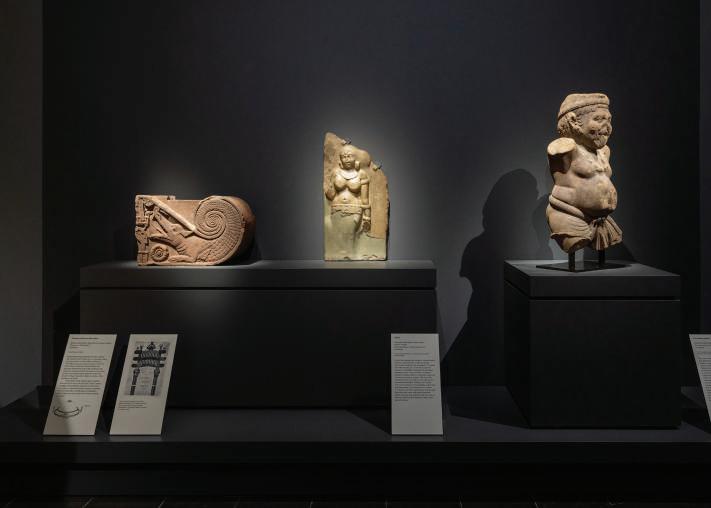

The culmination of a delicate undertaking that was more than a decade in the making, in July New York’s Metropolitan Museum of Art unveiled “Tree & Serpent: Early Buddhist Art in India, 200 B.C.E.-400 C.E.” The collaboration between the Reliance Foundation, an Indian philanthropic organization, and the Met, driven in part by businesswoman Nita Ambani, who became the first Indian person to become an honorary trustee in 2019.
The exhibit, which runs from July 21 to November 13, 2023, displays more than 125 objects from the period, immersing visitors in the world of early Buddhist art. “I come from India, the land of the Buddha, and it is a huge honor for me to support ‘Tree & Serpent’ through Reliance Foundation’s partnership with The Met,” said Nita Ambani. “With the ‘Tree & Serpent,’ we take immense pride in showcasing the deep-rooted connection between Buddhism and India. The teachings of Buddha are entwined with Indian ethos and continue to shape global thought. I hope people from around the world come and enjoy this one-of-a-kind experience.”
“Tree & Serpent,’’ featuring the sacred bodhi tree and the protective snake, both of which hold great significance and symbolism in the Buddhist tradition. Through the ancient art, the exhibit showcases the origins of Buddhism’s ideals, which evolved into the teachings of one of the world’s

If the “Tree & Serpent” inspires an appetite for art, take in three of the most expansive South Asian exhibits nationwide.
With about 4,000 works of art dating from the second millennium BCE to the present day, the South Asian Art collection of the Philadelphia Art Museum showcases works that come from India, Pakistan, Bangladesh, Sri Lanka, Nepal, Tibet, and more.

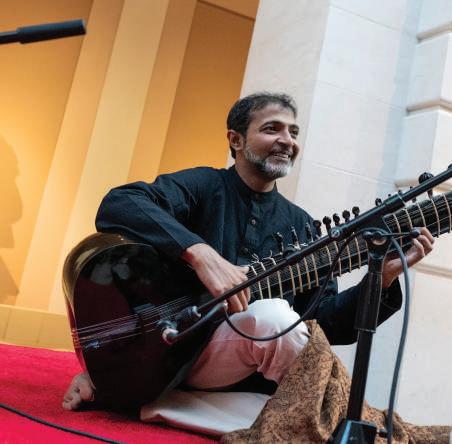
philamuseum.org/collection/south-asian-art
The ongoing exhibition of South Asian art hones in on the 19th century and delves into India’s complex history and foreign occupation. Works include clay sculpture, mica paintings, and Kalighat paintings, among others.
pem.org/exhibitions/south-asian-art-galleries
The exhibitions housed at The Rubin showcase the diversity of Asia’s cultures and narratives. With varied works that celebrate art forms ranging from ancient to contemporary, current special exhibits include photography and multimedia, and its permanent collection galleries are focused primarily on art from the Himalayan region.
rubinmuseum.org/events/exhibitions
Fifty years after the informal conversations and jam sessions that sparked the band into existence, boundary-shattering global fusion ensemble group Shakti releases its first new studio album—This Moment.
As a cornerstone of what is now called world music, Shakti inspired generations of musicians from around the world to explore sonic hybrids once thought impossible. Born of the musical and spiritual brotherhood shared by the revolutionary British guitarist and bandleader John McLaughlin and master Indian percussionist Zakir Hussain, Shakti’s soulful, organic intermingling of Eastern and Western musical traditions has proven transformative for both the band’s members and its listeners.
This Moment offers a set of new compositions and performances that burn with a rare intensity born out of passion. With McLaughlin (guitar, guitar synth) and Hussain (tabla) joined by vocalist Shankar Mahadevan, violinist Ganesh Rajagopalan, and percussionist Selvaganesh Vinayakram, the Shakti of now is a powerfully dynamic collective with the ability to draw from a vast well of global traditions.
Shakti will be celebrating the release of This Moment by undertaking an extensive performance schedule, including their first U.S. tour in 18 years. Beginning August 17 in Boston, the shows further reinforce Shakti’s pan-cultural ethos by introducing jazz and American elements via supporting spots by either Jerry Douglas, Béla Fleck, Bill Frissell, or John Scofield.

into the summer of Shakti in a city near you:


Aug 17 Wang Theater, Boston, MA
Aug 19 The Capitol Theatre, Port Chester, NY
Aug 20 NJPAC Newark, NJ
Aug 22 The Keswick, Glenside, PA
Aug 23 Wolf Trap Vienna, VA
Aug 25 Cobb Energy Center, Atlanta, GA
Aug 27 Koka Booth Amp, Cary, NC
Aug 29 Palace Theatre, Columbus, OH
Aug 31 Ryman Auditorium, Nashville, TN
Sept 3 Ravinia Festival, Highland Park, IL
Sept 5 Arlene Schnitzer Concert Hall, Portland, OR
Sept 6 Paramount Theatre, Seattle, WA
Sept 8
Mondavi Center for the Performing Arts, Davis, CA
Sept 9 Davies Symphony Hall, San Francisco, CA
Sept 11 Irvine Barclay Theatre, Irvine, CA
Sept 14 Hill Auditorium, Ann Arbor, MI
Sept 16 Riverbend Centre of the Arts, Austin, TX
Two South Asian podcasts for your listening pleasure
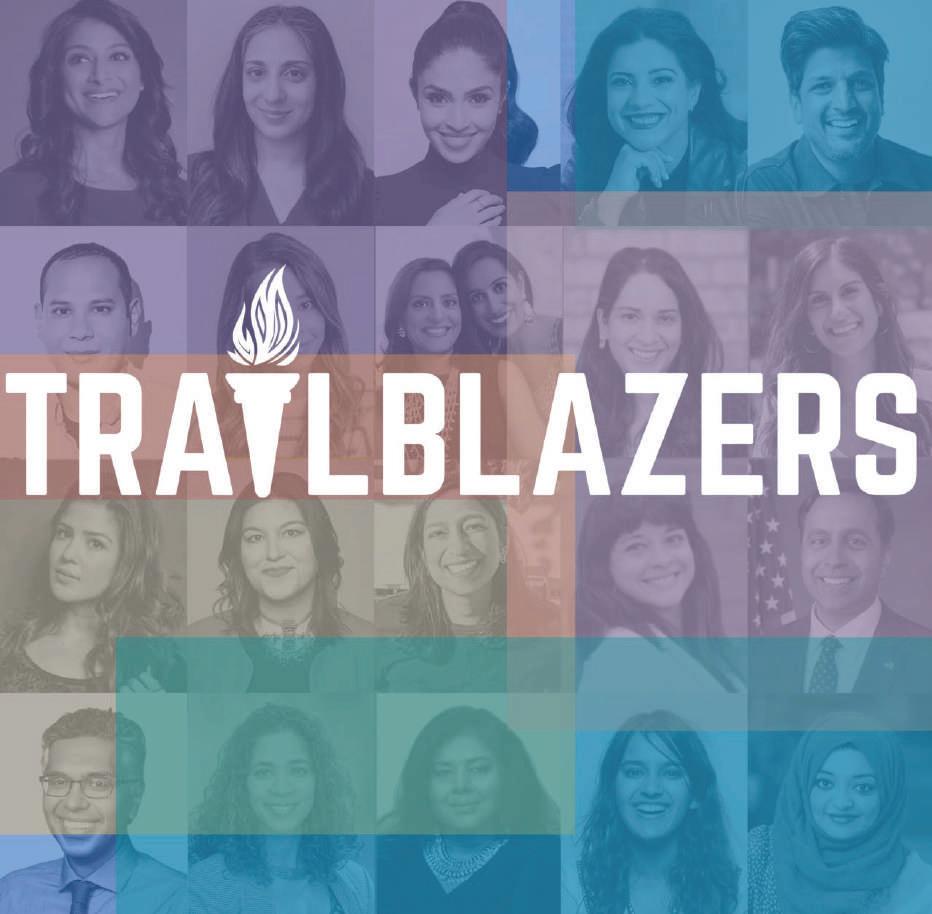
Desi Spark
Apodcast for South Asians interested in exploring challenging societal issues that brown people face (plus celeb interviews with fascinating South Asians on the rise), That Desi Spark will keep you entertained and informed. Created by three founders who offer conversations through the lens of dual identity that many South Asians face on topics including education, entertainment, and social justice, That Desi Spark, formerly known as The Woke Desi, introduces subject-area experts and unfiltered celebrity interviews. Founded by Annika Sharma, an author with a background in maternal and child health, marketing guru/lifestyle blogger Nehal Tenany, and hedge fund trader/producer Sridhar Pisupati, this podcast is sometimes funny, often poignant, and always illuminating.


www.thatdesispark.com
Hosted by brand strategist and entrepreneur Simi Shah, Trailblazers is more than a podcast—it’s a media platform. Shah, who served as chief of staff to Indra Nooyi, the former chairman and CEO of PepsiCo, is the founder and CEO of Trailblazers. The podcast, which “dives deep into the journeys of trailblazing South Asians, sharing the stories of leaders and dreamers lighting the way across the South Asian diaspora,” is now in its sixth season, so there’s more than 60 interviews to dig into, including comedian Zarna Garg and Congresswoman Pramila Jayapal.
southasiantrailblazers.com
Fast, healthy Indian fusion for busy weeknight meals with help from Patak Patel

Shalini Sekhar takes her creativity to underserved varietals
Gastronomic gamechanger Risha Jasmine Nathan is working to find solutions for unhealthy drinking water



These lazy days of summer aren’t meant for cooking dinner. You could be lounging poolside or at the beach instead of standing over a hot stove or grill. Without stopping for fast food, we went in search of ideas to keep ourselves and our families nourished with good choices this season. The creator of The Chutney Life blog, Patak Patel, is known for her resourcefulness in the kitchen. She’s got recipes for everyone. Whether you are a busy mom on the go or a rookie in the kitchen she makes cooking wholesome meals seem easy. Her blog and Instagram should be on your radar for fabulous recipes and kitchen inspiration.
Her new cookbook, The Chutney Life, is set to be released this fall, and she gave SEEMA a sneak peek. Packed with favorite recipes like her signature snack —spread ing lasan ni chutney (a spicy spread made by pounding together fresh garlic cloves and chili powder in a mortar and pestle) inside of a quesadilla, or tips on how to amp up simple soups with her go-to spices are sure to keep your weeknight meals fun and de licious. This month she shared with us her top tips for easy weeknight meals so we can all enjoy as much of our summer days and evenings as possible.
Patak says having a well-stocked kitchen and a few solid recipes are a lifesaver on weeknights. “In my pantry, you’ll find essentials, like canned beans and tomatoes for soups or stews, and I always take a little time at the beginning of the week to peel some garlic and ginger so I don’t have to do it for every meal during the week. Moreover, great flavor-packed condiments like harissa, gochujang, and an array of spices help meals come together effortlessly!”
If you’re going through the trouble of cooking she says be sure to double the batch. If you’re cooking a meal, double the recipe and freeze some for next time so all you have to do is defrost and heat!
Even if you love cooking, you may despise the cleanup. She says, “I love cooking, but hate cleaning. As dinner is cooking, take a few minutes to tidy up the kitchen and get things in the dishwasher to be as efficient as possible.” This way you can enjoy dinner and relax afterward because the cleanup is already done.

Don’t be afraid to use shortcuts! Patak says she can think of a million ways to use a rotisserie chicken, or repurpose leftover rice from takeout! Semi-homemade meals are perfect for busy weeknights.
Keeping your pantry stocked with your favorite spices and ingredients makes last-minute meals much more accessible. Patak’s must-haves include coconut milk, curry paste, lots of lentils, canned beans, and tomatoes, and grains like rice and quinoa. With these staples, you can make so many simple meals.
Patak was introduced to soups and quinoa at a very early age, and now her four-year-old is getting the same culinary experience. She says it’s a great way to sneak in tons of nutrition and get away with a one-pot meal. For her family, the biggest hit has been breakfast for dinner. Next time you’re short on time, whip up a big spread with eggs, pancakes (you can make ahead and keep in the freezer to simply reheat and serve), sausage, and fruit. It’s the one meal her son happily eats and hopefully yours will too.
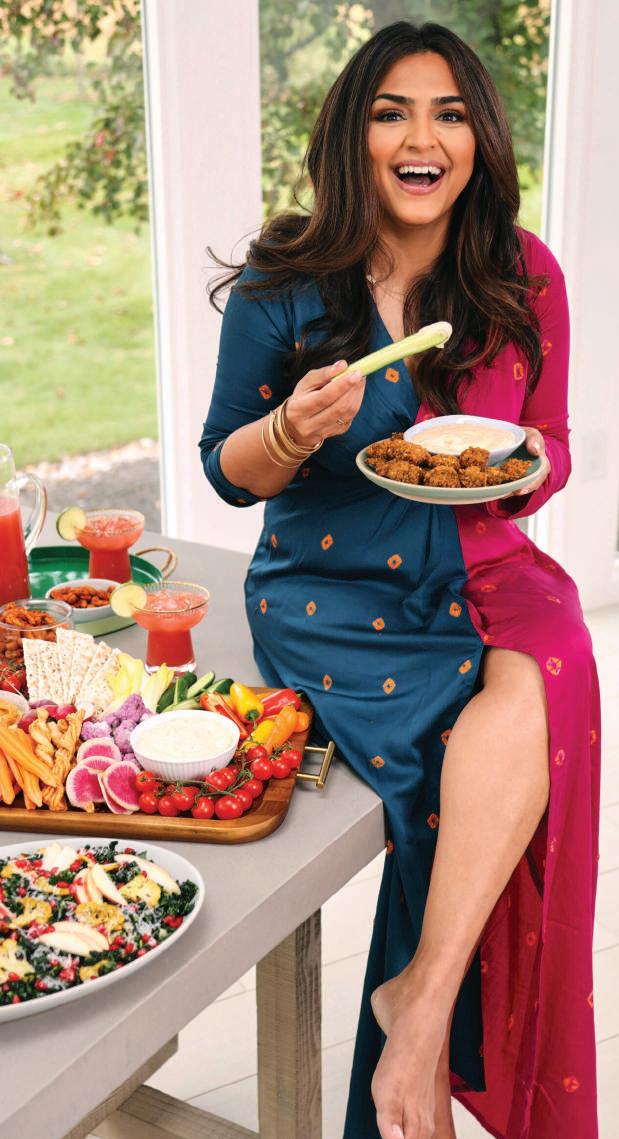
As a professionally trained piccolo player, Shalini Sekhar always knew she’d have a creative career — but she never anticipated she’d move across the country and end up as the country’s first American-born Indian winemaker. After her husband was transferred to California from their home in New Jersey, she ended up working in a wine tasting room and falling in love with it so much that she ended up studying enology at Fresno State. “I was totally bitten by the wine bug,” she explains. “The reason I love music and winemaking is that both are a combo of science and creativity.” In her experience working at wineries and harvests, she quickly fell in love with Pinot Noir, and started making wines for boutique wineries across the region.

Today, she’s also hard at work on making wine for herself under her own label, called Ottavino (the word for piccolo in Italian) in tribute to her music roots. She’s working with lesser known varieties, including Grüner Veltliner and a St. Laurent–which she admits few people have heard of yet. “It’s a red variety, also best known from Austria and the surrounding areas, and thought to be related to Pinot Noir,” she explains. “It has a little bit of spiciness to it. It looks dark like Syrah and is easy and lighter in terms of body and tannins. It’s just easy drinking.”
She feels a special kinship to these types of wine and grapes. “It keeps me creatively happy to continue to use the skills that I have from more traditional varieties to explore these other types. It’s the relationship between tradition and exploration,” she says. “That’s like being in your
40s and Indian American and finally feeling very comfortable with my Third-Culture status. I can make a Pinot under my label, because that is who I am as a winemaker. But I can also do these other things that are exploring, pushing forward, and getting curious and learning.”
To learn more, visit ottavinowines.com.





According to the UNESCO World Water Development Report, more than 800,000 people die every year from health problems related to unsafe drinking water and sanitation. One woman out to change that is Risha Jasmine Nathan, FHEA, a lecturer in forensic chemistry at Anglia Ruskin University in Cambridge and food science innovator.
As a PhD student in New Zealand, Nathan experimented with fruit and vegetable peels, including orange, banana, cucumber, apple, kiwi, and potato to remove metals from drinking water, research won her global recognition, including as one of only four Indians on the 50 Next Class of 2022 list. She told India’s Mint Lounge: “My research, which I completed in New Zealand in 2020, was about using food and vegetable peels and converting them into beads, which could suck up heavy metals from drinking water,” says Risha Jasmine Nathan. “My goal is to use the science of toxicology to work towards creating a safer and healthier world,” she says.

At 35 years old, Nathan is working to further her research in hopes of decontaminating drinking water for people all over the world.
Contaminated water and poor sanitation are linked to transmission of diseases such as cholera, diarrhea, dysentery, hepatitis A, typhoid, and polio.
• 368 million people take water from unprotected wells and springs
• 122 million people collect untreated surface water from lakes, ponds, rivers, and streams.
• 368 million people take water from unprotected wells and springs
• 122 million people collect untreated surface water from lakes, ponds, rivers, and streams.
Small acts of kindness can have a big impact in making people feel welcome. When we reach out and connect with others, we can build a stronger community where everyone – regardless of their background – feels like they belong.
LEARN HOW AT

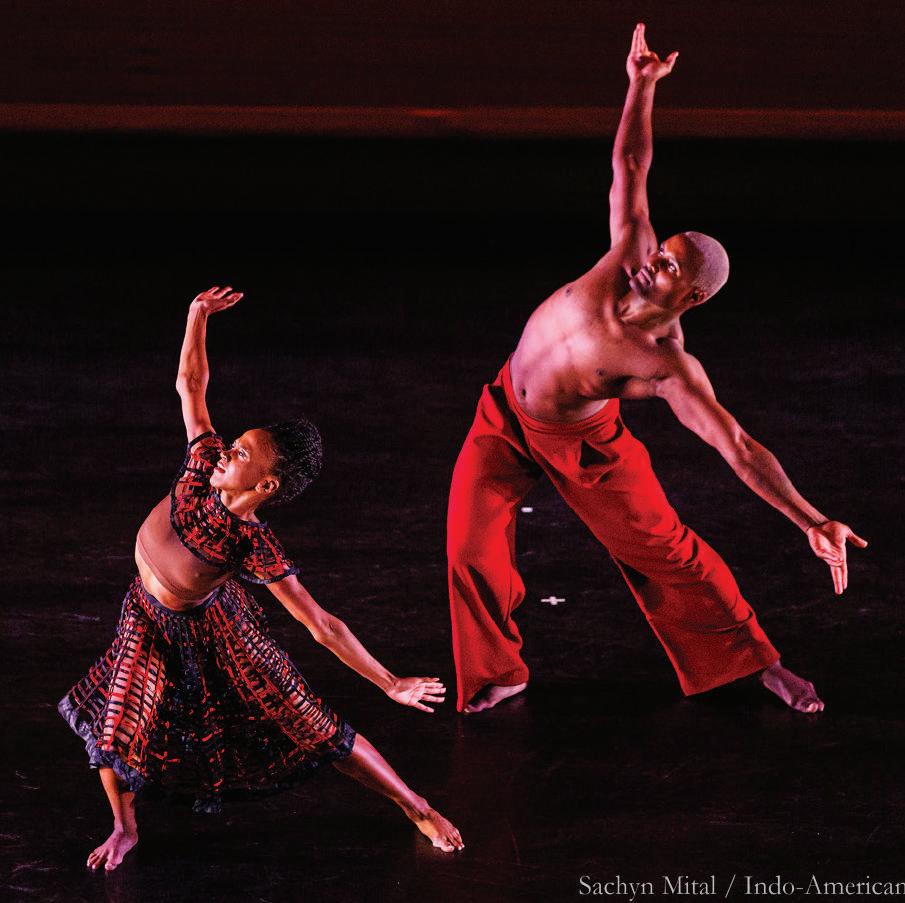
How Suman Gollamudi curates culture in NYC
The new ruling has sparked mixed opinions among South Asians far and wide
The country becomes the first in South Asia to legalize the unions

From working in information technology to working with NGOs, Suman Gollamudi has had a storied career that now includes serving as the executive director for the IndoAmerican Arts Council, a non-profit organization dedicated to building awareness, appreciation, and support for the performing arts of India in America. Under her leadership, the IAAC organizes various cultural events to promote Indian art including the New York Indian Film Festival. We asked her what it was like to live at the cross-section between creativity and culture.
I was always creative growing up. My mother’s side of the family was always involved in art and my mom used to love writing poetry, and selfpublished some poetry books. So it’s always been there in me, but the opportunity came when I was on a break and I really wanted to do something different, contribute meaningfully to the society, but also work in a field that gives me joy. I started by volunteering. I really loved what IAAC was doing, so I approached and said, “hey, how can I help?”
We do the New York Indian Film Festival. We have our annual music festival that happens in August. We run the Erasing Borders Dance Festival that

happens annually in September. Then we have our annual Literature Festival, which has been growing in leaps and bounds and it happens in November. Last year we had forty different authors, writers, and poets converging for the biggest celebration of Indian literature in New York City. The idea is to showcase and put the focus on arts and artisans with their work, which is either influenced by India or from India.
Independent cinema needs all of that support. These filmmakers don’t have typical big budgets for marketing or getting the resources to distribute or produce their films. Our film festival plugs that
gap in such an important way, because now you have this platform in New York where all of these different cultures are coming together. It’s a great place to bring that Indian cinema perspective and give people here the opportunity to witness that cinema and to give an opportunity to the filmmaker to talk about it. It gives filmmakers more credibility to make more progress to other festivals and go to the world over.




August 11-13
Held at spaces throughout New York City, the Festival of Indian Music will bring in folk singer Padma Shri Malini
Awasthi and Ustad Amjad Ali Khan alongside his sons and grandsons. “This year is going to be extra special for us as this year is the 25th year of IAAC,” says Gollamudi. For more information, visit iaac.us.

On June 29, the Supreme Court ruled that race could no longer be used as an admissions factor in colleges and universities across the U.S., overturning decades of precedent. The ruling has already sparked attention from South Asian communities across the United States.
In particular, the Harvard South Asian Association— one of the largest student groups at the university— has already come out with a statement on the ruling.
“Asian American students should not be used as a tool for perpetuating structural discrimination,” the statement read. “Nor do we accept the assertion that this is to our benefit. We refuse to be recognised under a model minority myth, as affirmative action brings diversity, inclusion and representation for all. Affirmative action brightens and emboldens our community, renewing Harvard’s mission to ‘educate the citizens and citizen-leaders for our society.’”
The statement also pointed to affirmative action practices in South Asia that have been successfully used to address inequality based on caste, gender, and ethnicity. “The primary objective is to provide opportunities and representation to marginalized communities that have faced discrimination and exclusion for generations, supporting equitable education for underrepresented South Asian students,” it read.
Other South Asians have spoken out in support of the ruling, acknowledging that identities in the U.S. have become more multicultural than ever and policies need to be updated to reflect that reality. “I couldn’t
help thinking of my own kids, who are of mixed South Asian and white descent—and whose views of their own racial identities seem to shift depending on who’s asking,” wrote Farhad Manjoo in The New York Times. “I don’t think my children will one day deserve any kind of admission bump because of their race, nor, obviously, do I think they deserve to be dinged for it.”
In all cases, as colleges adjust their policies in the coming year, experts will be watching closely how the ruling affects the demographic breakdown.

Voter surveys show that of Asian Americans support affirmative action.
69%

In June, the Nepal Supreme Court made a landmark ruling that gave same-sex couples the right to register their marriages, making it only the second country in all of Asia and the first South Asian country to legally recognize same-sex marriage. This continues progress from a 2007 ruling that ordered the government to end LGBT discrimination and guarantee equal rights.
“People are already celebrating,” said Sunil Pant, who was Nepal’s first openly gay member of parliament. “They are rushing back to their villages to collect documents for their marriages.” He estimates that nearly 200 couples may openly register in the coming month.
One of those couples included Surendra Pandey and Maya Gurung, who were married in the Hindu tradition six years ago but had yet to receive a legal certificate.
“I am overwhelmed with joy because of this decision and it is a day of commemoration for our community,” Gurung told the AP. “This court ruling has established that we are equal citizens of this country.”
With virtual and in-person community workshops, a resource hub, and a podcast, the South Asian Sexual and Mental Health Alliance (SASMHA) aims to provide members of the South Asian diaspora with the tools needed to bridge the divide between staying rooted to culture while being able to create spaces to fully express oneself. sasmha.org
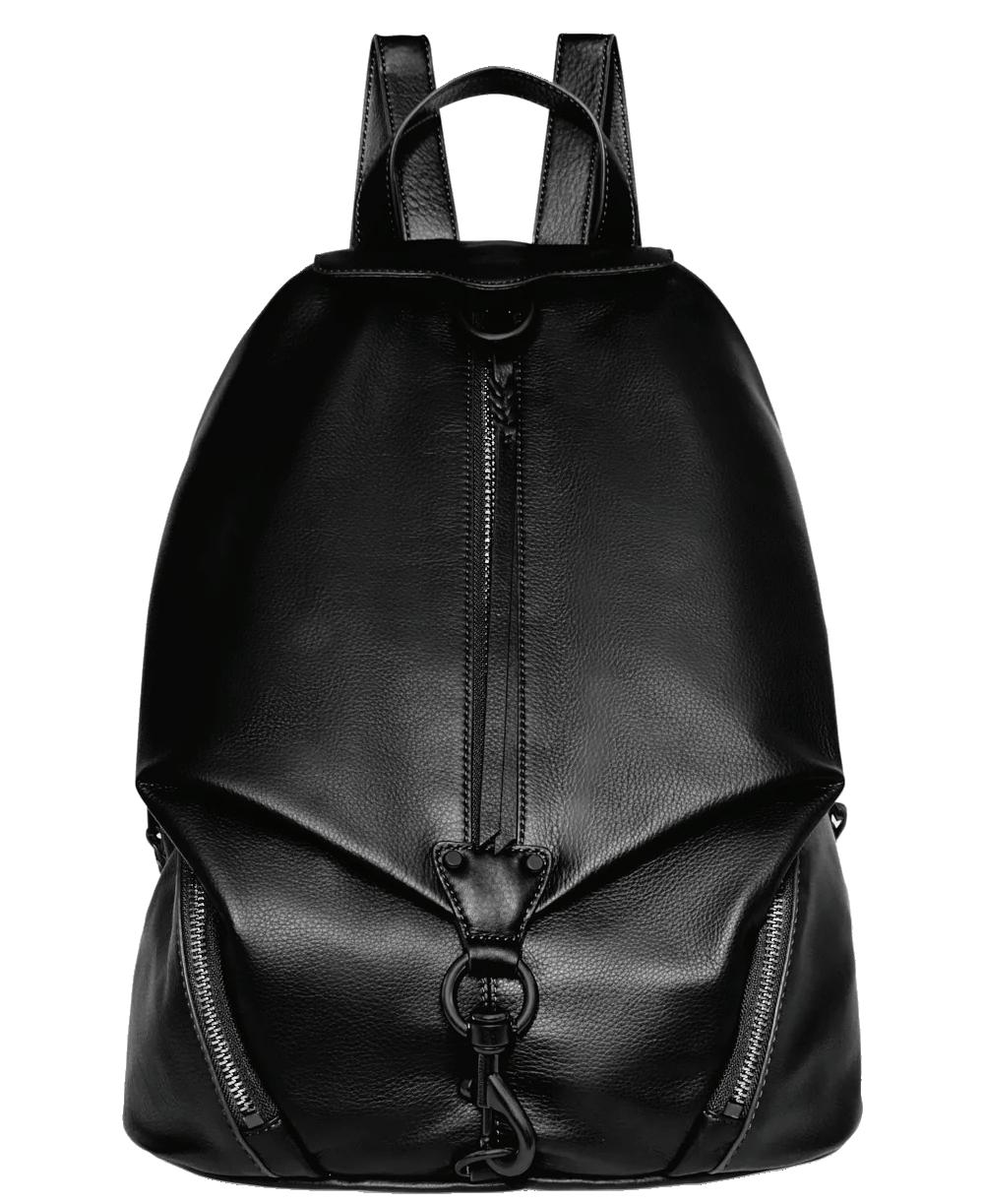

Famous for her color theory videos, Monica Ravichandran is making waves in the beauty world as a Sephora Squad influencer

Three adorable options for the back-to-school season
5 cleansers for sweaty summer skin

How one South Asian artist is bringing old traditions new life
In March 2020, Monica Ravichandran made her first makeup look on her instagram account because she couldn’t go to Paris to follow her original plans to study abroad.

“I was super depressed and sad and lonely,” she wrote to her 223,000 followers explaining her origin story. That year, she also applied for the Sephora Squad—an elite group of influencers from diverse communities that receive a yearlong, paid partnership with beauty superbrand Sephora.
That year, she wasn’t selected, but in 2023, she received more than 2000 testimonials from her followers, which earned her a spot on the coveted list this year. Monica has already made an impact with her TikTok videos, which spurred the summer’s breakout purple lipstick trend for brown skin, and she continues to make content based on color theory and what compliments different skin tones best.
“Super excited for the upcoming year,” she wrote in her post thanking her fans. “And thank you guys so much for all the love and support.”
Follow Monica:
TikTok: @makeupbymonicaa
Instagram: @glow_bymonica
No longer just for kids, backpacks can be a fashionable and vertistle carry-all alternative to the typical tote or purse. Whether we’re on the road or hitting the office, we love these three shoulder-friendly bags for their roomy pockets and cool colors.
Coming in more than 10 bold colors (including this gorgeous Barbieready pink), the Kaya bag helps stowaway any laptop in luxury. We love the detailing on the edges and fun square style that also slips on to any carry-on bag.

$138, calpaktravel.com

Though the price tag may be high, the quality materials here are well worth the splurge. Made from canvas and real Italian leather, this backpack also comes with a luggage loop for your carry-on, making it a perfect go-to travel option. $750, tumi.com
Julian Backpack
We love the super unique front-zip closure on this modern reimagining of the classic silhouette. With luxe leather and eye-catching hardware, this bag easily goes from work to play, and any occasion in-between.
$428, rebeccaminkoff.com

The heat of the summer months can leave us all with a little excess sweat. To banish shine and grime, we reach for one of these green-friendly cleansers to wash off for a fresh-faced start.
TATCHA RICE WASH SKIN-SOFTENING CLEANSER

Based on the practice of Japanese women repurposing milky rice water, this cleanser uses rice powder and Okinawa red algae to provide essential vitamins to the skin—providing essential moisture alongside its gentle clarifying cleansing.
$40, tatcha.com
This cleanser feels like a green drink for your face, combining antioxidant rich kale, spinach, and green tea for powerful cooling effects. Plus, we love the fresh garden scent.

$39, youthtothepeople.com
If you’re looking for a little exfoliation, this cream cleanser comes with environmentally friendly jojoba beads to buff away dead skin, while wild juneberry harvested from Jackson Hole, Wyoming offers softening nutrients.
$39, alpynbeauty.com

With its fresh peppermint and palo santo scent, this cleanser is our shower staple to wake up energized and refreshed. Turmeric provides the daily dose of antioxidants while aloe vera keeps skin soothed and hydrated. $44, us.koraorganics.com

With a formula built for each dosha (including Vata, Pitta, and Kapha), this herbal dry blend can be mixed with water to provide skin-specific nutrients for skin healing and exfoliation. Only pure Ayurvedic herbs, roots and flower extracts are used in each formula.
$29, pratimaskincare.com


Combining global styles with the traditions of her ancestral Madhubani region, artist Nayana Jha brings a colorful mix of imagery to a wide variety of paper goods, each featuring her own original designs. From stunning wrapping paper to cards to notebooks, this is one of our favorite go-to shops for beautiful gifts. nayanadesignstudio.com






The CDC is urging the public to get back on track with their vaccines this month
During the pandemic, healthcare providers saw adults and children lag behind in their routine immunizations. While numbers are slowly bouncing back, the CDC notes that many are still behind schedule. Thankfully, August marks National Immunization Month, as a way to remind the public about the importance of staying up-to-date on vaccines, especially as back-to-school ushers in increased chances of spreading preventable illnesses.

In 2019, the United States had more than 1,200 cases of measles, the greatest number of cases in the US since 1992, stemming in part from missed vaccinations. Numbers have also dropped for the flu vaccine. dropping five percent for children 6 months to 17 years old. The CDC notes these drops put students at higher risk for illness and absenteeism, which can result in hindered academic performance. While there’s a lot of myths and misinformation about vaccines, which has only spread in the social media era, millions of immunizations are given yearly and side effects tend to be very mild, typically pain or swelling at the injection site.
Doctors can advise on the best schedule and vaccines for you or your child, and you can also find a helpful color-coded chart online to keep you on track at cdc. gov/vaccines/schedules.

3
Source: CDC
out of every 4 adults are missing one or more routinely recommended vaccines.
The Academy Award-winning Netflix documentary The Elephant Whispers, set in south India, opened many people’s eyes to the plight of pachyderms around the world, leaving many people wondering what they could do to help. Recognizing the gentle giants on World Elephant Day, held every year on August 12, is one way to start. Here are 3 places you can donate your time, visit, or volunteer to help:

Wildlife SOS is committed to fostering harmony between humans and wildlife (including elephants) by implementing welfare and conservation strategies.
Several projects under Wildlife SOS are focused on elephants. These include the Elephant Conservation and Care Centre (ECCC) in Mathura, a refuge for abused, captive, and exploited elephants. The Elephant Rehabilitation Centre (ERC) in Haryana. And India’s first Elephant Hospital in Uttar Pradesh, where veterinarians and skilled staff care for injured, socially isolated, malnourished, and emotionally distressed elephants. wildlifesos.org
allowing them to exhibit natural behaviors, socialize, and roam freely. It has two locations: in Chitwan’s Tharu Lodge and Bardiya National Park’s Karnali Lodge in southern Nepal. These allow visitors to explore preserved jungles and observe elephants, tigers, rhinos, crocodiles, leopards, and deer.
tigertops.com/lodges/elephant-camp

Launched in 1964, Tiger Tops wasn’t always an ethical sanctuary, but transformed itself in 2016, ceasing all elephant safaris. It became the first sanctuary of its kind in the country. With a focus on elephant well-being and responsible, sustainable tourism, the camp aims to foster educational interactions between humans and elephants in their natural habitat. Tiger Tops provides spacious enclosures for elephants,


The Elephant Freedom Project is an ethical sanctuary in Kegalle, between Kandy and Colombo and two hours from the airport. The project’s primary aim is to provide a safe, nurturing environment for elephants rescued from captivity or abusive situations. It also promotes responsible tourism and raises awareness about the importance of elephant welfare.
They have two elephants rescued from the riding and logging industry, and hope to increase that number to three soon. They allow a limited number of visitors to interact with the elephants by feeding and bathing them. There is absolutely no elephant riding. elephantfreedomproject.com
When Hina Laeeque was young and trying a home workout routine with her sister, a friend told her, “I don’t know why you bother. You’re brown, you’ll never have abs.” The comment stuck with her so much that she just assumed people of a certain background couldn’t get fit. But after a period of working hard in the healthcare field and having children, she found her
way back to home workouts, and soon found herself feeling better than ever.
“I had an assumption that I had to go to the gym and be there for an hour working out every day,” she says. “That just didn’t work for me as a busy mom that worked 9 to 5. It didn’t make sense to go to the gym for an hour, come back

home to make dinner and handle bedtime. It just wasn’t feasible for my lifestyle.” But when she tried home workouts, she realized that a combination of good dumbbells, bodyweight movements, and cardio, she could get in the best shape of her life.
Since then, she’s been on a mission to help South Asian women live an active life with her Empowered Fitness coaching. “We pour into others a lot, our family or children or career,” she says. “These are highly intelligent, brilliant women, but they don’t fill their cup up first. I’m really trying to change that narrative in our community that you can be fit and active, and you can be all the things you need to be. But it starts with you and filling up your cup.”
Here are a few of her favorite tips for women looking to get started on their fitness journey:

• Start With Your Why. This often might start with a typical “I want to lose 20 pounds,” but it helps to really understand what Laeeque calls “the deeper why” like wanting to run around with your kids, take care of elderly parents, or have energy after their 9-to-5 job.
• Commit to a Plan. “Goals are great, but you need to have a plan,” says Laeeque. “You could have the best gym or best home workout, but if you don’t know what you’re doing you’re not gonna get to your end goal.” That’s where a coach can help get you started and design the ways best fit for your lifestyle.
• Adopt a Back to Basics Eating Plan. Skip the fad diets in favor of ensuring you have a balanced macro-driven diet, loaded with whole foods and lots of water..
50%
Studies show that South Asians who engage in regular physical activity can reduce the risk of developing cardiovascular disease by up to
Like so many South Asian women, Neelu Kaur wasn’t taught to advocate for herself, which was a major disadvantage in the American corporate culture. After learning lessons the hard way, she dedicates her life to helping women avoid the same pitfalls.
 • Abhijit Masih •
• Abhijit Masih •

As Neelu Kaur experienced it, her traditional Sikh parents valued the collective over the individual or, in her words, the concept of “we” over “I.” In a reframe she relied on throughout her young life, they told her to “put your head down and work, and your work will speak for itself.” Kaur carried this mindset through a bachelor’s degree from New York University’s Stern School of Business and a master’s degree from Columbia University in social & organizational psychology.
That’s where her trouble began.
The certified NLP Master Practitioner and Coach soon realized that mindset was a hindrance in the corporate world, which expects individuals to thrive and advocate for themselves. Prioritizing the group’s interest over your own isn’t necessarily an asset in today’s competitive work environment, which is contrary to the philosophies in so many South Asian households, a collective culture that leans on attributes like cooperation and sharing, rather than of individualistic autonomy and personal precedence.
In her corporate career, Kaur kept getting laid off and passed over, which she eventually came to realize had everything to do with her mindset and lack of self-advocacy, which is an issue that so many South Asian women encounter.
Now, in her work as an executive leadership coach, Kaur focuses on leadership, mindfulness, and burnout management for individuals, teams, and organizations, in an effort to help people overcome the pitfalls she encountered. She recently published her first book, Be Your Own Cheerleader , which focuses on self-advocacy for Asian and South Asian women. Here, Kaur explains in her own words what she believes holds so many women back from thriving in the corporate world and beyond.
Indian-born and American-raised, my parents would get upset if I said, ‘These are my toys.’ My brother and I had to share everything. We would joke and say that our home was like Grand Central, as everyone was always coming through and everything was about sharing in group harmony. I didn’t realize that it would be a problem until I would go to school or until I got into the corporate space. I realized that we come from collective ‘we’-based cultures. Then we’re expected to thrive in ‘I’ based individualistic cultures. So that’s really been my focus for the past few years, helping South Asians and Asian women advocate for themselves when they come from collective cultures and help them thrive in ‘I’ based individual corporate America culture.
The religious Sikh household I grew up in was such a different experience than my friends’. I also grew up in an area where there weren’t many other Indians, so I was always assimilating, just leaving the house. And so the cultural influence definitely took shape and force when we got home, and my parents made sure that they did not want us to lose our cultural roots. So in some sense I’m grateful for that. In other sense, I wish I had a better time assimilating.
To be honest, I still struggle with self-advocacy and self promotion. I kept getting fired and downsized over and over again. I didn’t understand what was happening. It’s only when I went back to Columbia and did my masters in social and organizational psychology, I learned research about these collective cultures and individualistic cultures. So it raised my awareness.
In my last downsizing, which was in 2013, I was escorted back to my desk. I was given very few minutes just to grab my belongings. When I was taking the elevator to leave, I realized I was letting myself down by not self-advocating. I could have done a better job speaking up about my accomplishments in that role and all of the other things that I was doing in the organization. Instead, I relied on ‘do your work and your work will speak for you,’ because that’s what I learned from

my parents.
If you go to an Ayurveda practitioner or doctor because your pinky is hurting, the practitioner won’t just look at your pinky. They’ll look at your hand and your arm and essentially your whole body. I use the same approach when working with organizations. I don’t just look at the individual. I will look at the team, the department and the organization itself. If you think of an onion and layers of the onion, I’m constantly dancing between the different layers of self, team, and organization. If we just start with the individual and if you are not feeling mentally well, if you feel like you’re not serving your purpose in your role, you’re not going to be productive. So if I’m brought into work with the individual and their team, that’s the focus. Ultimately, the impact trickles out to the rest of the organization.
During COVID, there were so many mental health issues going on in the workplace. We were overworked and overstressed and that’s when I felt, at least from an organizational perspective, I could start working more in the lens of Ayurveda. I normally use Ayurveda in individual coaching consultations but I started doing more workshops. I would take basic principles like daily routines, nightly routines, learning when we’re most productive, and incorporating that into my workshops. The way that I brought it into organizations such as financial services and tech is really not use the Sanskrit terms; but to just say, these are daily routines. If someone was more curious after the session they would come to me and ask me, where did you get all of this information? And that’s when I would explain in detail about Ayurveda.

You can lead your religious organization, your children’s soccer team and you can lead in a team. So leading is not really the question. The question is what type of leader do you want to be. The misconception is that everyone needs to be a transformational leader and I think that there’s also the necessity for transactional leadership. So in a home, figure out what you do best, what your strengths are and go from there. So if you’re more of a detail oriented person, you might be more transactional, taking care of the daily tasks. And if you’re more transformational, you’re sort of leading the family or the group towards a certain vision. So I think there’s a need for both. What we hear is that ‘Oh, we have to be transparent, transformational’ and that’s not necessarily the case. We need both. When you see a transformational leader, you feel motivated. You feel inspired. They are leading you in a specific direction. A transactional leader is someone who’s there on a daily basis—taking care of tasks, deliverables. One is more vision oriented and one is more task oriented and you need both.
“The misconception is that everyone needs to be a transformational leader and I think that there’s also the necessity for transactional leadership.”

“Wecomefromverycollective‘We’ based cultures. Then we’re expected to thrive in ‘I’ based individualistic cultures.”
FAVORITE MENTOR OR ROLE MODEL - Spiritual text. I go back to spiritual text for guidance.
BEST PART OF YOUR JOB - Helping people.
FAVORITE HOBBY - Aroma therapy
MOST MEMORABLE CORPORATE WORKSHOP - Any workshop where it is an Asian or South Asian audience and I’m teaching content from ‘Be Your Own Cheerleader,’ because it really resonates with the audience.
FAVORITE HOLIDAY DESTINATION - Some place more relaxing because New York City is not relaxing.
BEST PLACE FOR A CORPORATE RETREAT – Big Sur, California.
FAVORITE FOOD - Kulche and Chole.
MANTRA FOR RELAXATION - Do the opposite of what you see. For example, if it’s hot, do something cooling. So cooling foods or cooling drinks.
FAVORITE MOVIE - Being a New York City girl, I think all of the Sex and the City movies really resonated with me.
FAVORITE MUSIC - I like relaxing music. Anything that’s chill, relaxing, instrumental music is really nourishing to me. Also, when I want to increase my energy I listen to Hip Hop, dance.
A PERSON YOU WOULD LOVE TO COACH - Anderson Cooper. I’m so impressed by him and I wish I could be in his presence and ask him empowering questions and see how he would respond. And I think the second runner up would be Oprah.
I like to use a simple metaphor for folks that actually drive. If you think of a speedometer in a car right there’s a dial. So what I like to say is, there’s a “WE” dial and an “I” dial. So, if you’re in a performance review conversation, that’s really the time when you have to turn up the “I” dial. Where you have to talk about yourself, your accomplishments on the team. And if you are in a team setting and you’re working on a shared deliverable, that’s when you turn up the “We” dial. Where you talk about ‘our’ outcomes and ‘our’ deliverables. Yes, it can be uncomfortable for many South Asians. We generally feel more comfortable and familiar in the ‘We,’ rather than sound boastful. We are simply turning up one aspect of ourselves. We are still authentically being us, but we are using different languages. We are talking more about ourselves, which doesn’t come as second nature to us.
I encourage the ‘We’ and the ‘I’ dial thinking at the forefront. The other thing that is really important and so simple is that your level of perfectionism is in a way unhealthy. I remember when I was little and I would get a 95 percent on my test score, my parent’s first response was what happened to the other 5? It can lead to a lot of mental health issues going forward. So what happens for many South Asian women is they’re striving for that 100 percent all the time. One thing we don’t know how to do is pat ourselves on the back, to celebrate our small successes. Many of us are accomplished, we have multiple degrees, and we’re authors, coaches or whatever. Along those long journeys there are small, simple steps that we took. I encourage young South


“It is uncomfortable for South Asians. We generally feel more comfortable and familiar in the ‘We,’ rather than sound boastful.
Asian women to really celebrate those small successes. This is what we’re actually taught as young children. We’re taught to get to that next milestone, to get to that next degree, to get to that next accomplishment. What I say is that is great. We want to be those high achievers but we also want to celebrate small successes.
One of the first tips is that the first hour that you wake up should be device free. Many of us use our phone and it is the first thing we reach for. What happens is that you’re training your brain to be reactive and distracted all day because you’re going to respond to emails, to text and to social media posts. So the idea is that the first hour you’re easing into your day, and that essentially sets the tone for the rest of the day and the same thing at night. One hour before you go to sleep is sort of your pamper hour, where you don’t talk about anything that’s conflict related -watch the news, read anything that will get you upset or unsettled because you want to set yourself up for restorative sleep.
What I’m noticing for myself and for the people I coach, is that there is no time between meetings. It’s literally one after the other to the point where sometimes you don’t even have time to eat or go to the restroom. This is a recipe for burnout and a recipe for a mental health burnout. So we want to make sure that we add buffers between our meetings. That is a simple thing that we can start doing. I know many organizations I coach; they actually cut off meetings at the 45 min mark to give everyone a buffer. And so if you’re a leader in those organizations, it’s really good to make sure that’s part of your corporate culture.
For me, because of my own personal journey with mental health, I realized that there’s not one magic pill or one thing that’s going to help. It’s a cocktail of remedies. For me it’s yoga. It’s Ayurveda mindfulness. I do a lot of movement based practices to help with stress reduction. Many of us have this idea that it’s just one thing that’s going to help us feel better or feel happy and that’s not the case. It takes a whole cocktail of things. The idea is to self inquire to understand what it is that you need in order to feel mentally well.

Ayurveda is the science of life. It is an ancient holistic healing system based in India. The word “Ayurveda” comes from Sanskrit and it combines ‘Ayur’— life, and ‘Veda’—knowledge of science. Ayurveda can be translated as the ‘science of life’ or the knowledge of longevity. The core principle of Ayurveda is to maintain balance between body, mind, and spirit to promote good health and prevent illness.
In Ayurveda there is a concept of sattva, which is one of the gunas (or qualities of nature). It is defined as having a serene, harmonious, balanced mind or attitude. When it comes to business, it is crucial to operate sattvicly, which means to operate in a conscientious, compassionate, clear, respectful manner. In business, to be a conscientious, honest, brand, or service is to operate in a way that will set you up for success. You will be well-respected and are sure to be successful when you lead with a pure heart and a clear mind.
Withadistinguishedcareerasatextiledesigner andfashionmastermind, VeenaAdvaniistrulyanoriginal.
• Abhijit Masih •

eena Advani is an artist at heart—an inspiring woman, who has been able to extend her talent and passion for textile design to fashion, art, and real estate. She has confronted challenges and sorrow, which she channeled into meaningful works of art. Advani has worked with major international fashion houses, and her creations have been worn by international supermodels and musical superstars like Naomi Campbell and Whitney Houston. In her current passion of painting, she uses embroidery and beading, a nod to her long career as a fabric designer and embellisher to New York fashion houses like Pamella Roland, Marchesa, Isaac Mizrahi, and Lanvin.
My mother had great foresight and vision to think that all women should have a vocation so that they could be financially independent. I was very into art, so she sent me to JJ School of Art in Bombay. She made me do textile design, so that I would have a career prospect to be able to earn a living for the rest of my life. I am ever so grateful to her as my whole journey is dependent on this first move.
When I got my green card, I started this label called DIVA, very innocently not even knowing what the word meant. At that point embroidery was just emerging. It wasn’t even mainstream and not many people were doing it and I was lucky enough to be there at the start of it. So I had instant success. I found myself in the windows of Saks, Lord & Taylor and Elizabeth Arden. Also in soap operas and Whitney Houston wore my clothes for her concerts, so it was one hell of a high in the early eighties with my label when there were no such things as brands.
I had my first crash when my business partner and I couldn’t see eye to eye. My husband and I were falling apart at the time. I was about 31-32 years old and I owed the IRS a huge amount of money. I was so frightened, I couldn’t sleep and I kept getting notices from them. One fine day I just went over to them
Vand said, ‘Hey, help me find a way out.’ They were so happy and amused with me and asked how they could help. I said, ‘Leave me alone for 5 years, and I will pay back.’ I never got a single notice from them ever again. Five years later, through Design Archives I was able to pay them back in full and also bought myself an apartment in Bombay, as well as having one in New York. So I was thriving again.
After Diva, I realized I didn’t want to sell and the production and sampling was too much for one person to deal with. I started Design Archives to offer my embroidery services and I made one call. That was to Isaac Mizrahi’s company to offer my embroidery services. I liked the idea of doing embroidery for these fashion houses and getting exposed to a much bigger picture of the fashion industry. I started working for him and that was the heydays of the supermodel. At that time, most of his shows were very electric. Naomi Campbell wore one of Isaac’s dresses that I had embroidered and it came on the cover of Time magazine. I went with the flow, through word of mouth, people introducing me to the next designer and before I knew it I was working with mostly everybody on 7th Avenue— Anne Klien, Geoffrey Bean and his assistant at that time was Alber Elbaz, who went on to become the creative director of Lanvin. That’s how I went from one company to the other, and was completely occupied and busy
There has to be dedication and discipline along with talent. It’s not just you and not just luck. You have to work at it and you have to really want it. You can manifest whatever you want. I saw that happening with myself. I crashed twice, not just once, even with Design Archives, work got lesser in value because more people got into the business and then China came into play with cheaper options. It became a huge challenge to even stay afloat in that kind of an atmosphere. But I feel everyone can manifest, have an open mind, be inquisitive and you can come up with lots of wonderful ideas. Just work with your heart and have a discipline and there’s no way you’re not gonna make things happen the way you want.
I met Ali in Santa Fe. She and I turned out to be textile junkies. I loved embroidery and textiles,
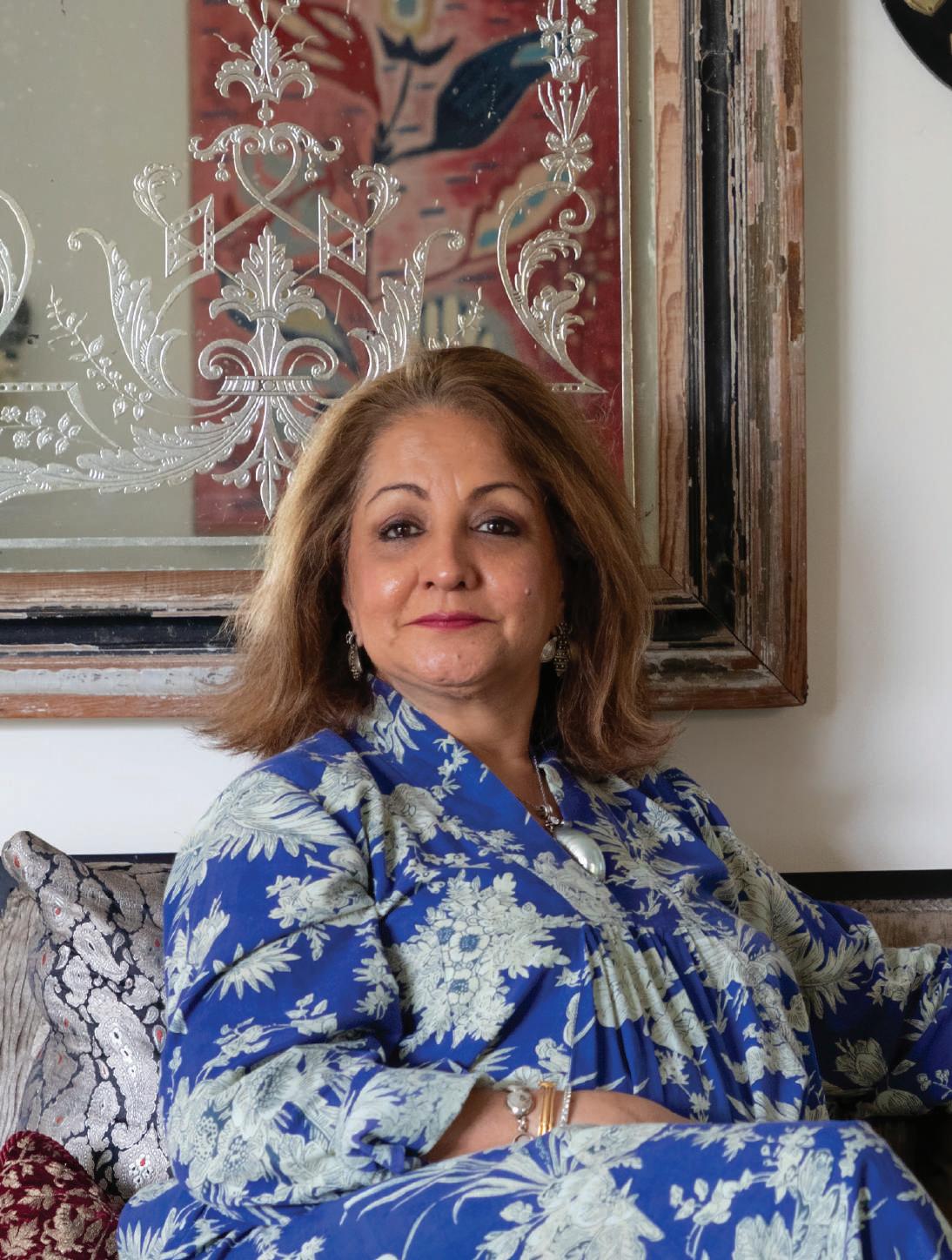
and she had a passion for it too. She had bought a shawl that I had made and a friend introduced us. The next time she came to New York she came to visit me. We had supper together and ran the idea about doing something together. So we came up with this label we called Milagro, which is like a play on her name. We did beautiful embroidered Pashmina’s and lovely little handbags. That enabled us to have a nice deep friendship which grew over time. Even though we stopped our business after a while (we both got busy in our own lives and other businesses), we still continue to be very close friends. I was very happy to meet her because she was a hero of mine when I was young.



As my embroidery got less creative and important for me, I got into interiors and home. On a trip to Goa, I completely fell in love. It is so peaceful, so quiet, it hasn’t been discovered yet. At that time I lived in Trump Tower in New York and I would come home and say, Why am I here? So I had this idea to sell my apartment and use all that money to buy myself a land bank in Goa that will give me 9 villas. I was very sure that I wanted to decorate them
as well. In India you just get the walls and the floor. I wanted to be creative. So my villas had bedrooms done, had paintings up, curtains, carpets, ash trees, fully equipped kitchens and it was such a thrill. It was much more engaging than the embroidery had come down to. I was the first one in Goa to do a fully furnished house which has become the norm now. So I’m proud of that achievement.
Sadly I lost my brother in 2018. He was very young and we were very close and it was a huge shock. So I locked myself up for a good long period and that’s how I started to paint. I had conceived this idea that I want to do embroidery mixed with my art because that was a story. It is a legacy of my 40 years of work in the fashion business. I didn’t want to just dump it. I loved it. It was time to move forward, and art was really my passion. So I completely got into painting and the embroidery manifests in my paintings. Textile embellished art is a huge category now in the art world. I am very pleased at the moment because I got acquired by a major collector in India and another very big buyer in Saudi Arabia. I’m overjoyed.





I liked the idea of doing embroidery for these fashion houses and getting exposed to a much bigger picture of the fashion industry.”
“
A new United Nations report shows an international bias against women remains stubbornly high and unchanged—an attitude that all too often results in violence at home and within institutions.
•


early nine out of 10 people still have a bias against women—a number that has remained stubbornly unchanged over the past decade. That is according to the UN’s 2023 Gender Social Norms Index, which measures attitudes of all genders towards women in terms of their role in politics, education, culture, and their physical bodies across 91 countries. The study found almost half of people believe men make better political leaders than women, and two in five people believe men make better business executives than women. These attitudes prevail regardless of a country’s GDP, region, culture, or income.
In particular, experts remain concerned about the attitudes around the physical integrity part of the study, as it serves as a proxy for both reproductive rights and intimate partner violence, which results in the deaths of more than 45,000 women and girls every year according to the UN. “The UN Report is disheartening and a clear, troubling message that efforts to address gender-based violence [GBV] need to be redoubled,” says Ritu Gairola Khanduri, Assistant Professor of Cultural Anthropology at the University of Texas, Arlington. “The fact that it is a chronic and global crisis shows that systemic patriarchal interests worldwide sustain each other.”
Gender-based violence includes any form of violence or harm that’s inflicted on individuals or groups based on their gender or perceived gender roles, explains Khanduri. “It encompasses acts of violence, discrimination, and oppression that are specifically
directed at individuals or groups due to their gender identity or the social expectations associated with their gender,” she says.
This can include multiple forms of violence, which includes physical, sexual, verbal, emotional, and psychological abuse—as well as threats, coercion, and economic or educational deprivation, which is based on a person’s gender identity or biological sex, explains Sameena Mulla, Associate Professor of Women’s, Gender, and Sexuality Studies at Emory University. And while gender-based violence has become short-hand for violence against women and girls, she notes that it’s important to broaden policies combating GBV to include protection for trans women and people with nonnormative gender identities.
Gender-based violence isn’t always experienced solely in the home either. Social norms and power imbalances can cause it to occur within families, communities, and workplaces as well. “For example, one could look at Obstetric violence, the violence women encounter during pregnancy and childbirth in the institutional space of medical care,” says Gairola Khanduri. “Similarly legal systems can be the sources of GBV, rather than the sources of relief, redress and justice.”
This kind of discrimination and damage can also intersect with other forms of discrimination, like racism, casteism, ableism, and heterosexism, which can often increase the vulnerability to experience GBV.
While acknowledging how widespread gender discrimination and violence remains across cultures, policies need to be put in place at the systemic level in order to provide women with the practical means to escape violence.
Economic-based interventions are often the most powerful and potent first-step, as it enables women and those suffering from GBV to escape situations where they may feel trapped due to their finances. “Economic independence helps people achieve safety,” explains Mulla. “This can include de-linking your financial future from an abusive partner for example or from a dangerous job.” For women, this also often means having the economic resources to support their children and give them stable housing.
Providing women equal access to education and employment opportunities also ensures that they can continue to have the economic empowerment needed to escape or avoid situations with GBV. In the US in particular,
If you or a loved one is experiencing gender-based violence or intimate partner violence, the following organizations have specialized advocates to help.
1 2 3
Sakhi
Helping over 15,000 survivors since 1989, Sakhi was built to represent the South Asian diaspora in the movement for gender justice. The site offers its resources in translation, and trained advocates who speak eight South Asian languages. sakhi.org
South Asian SOAR
SOAR was founded recently with a mission to grow survivor and collective power to transform the culture and systems that lead to violence in order to bring joy, healing, and justice for all South Asian survivors and communities. Survivors and allies can access tools and training for leadership and advocacy. southasiansoar.org
In addition to providing immediate options for texting, calling, and establishing a plan for safety, this coalition also provides resources and connections to local communities that can help.
www.thehotline.org
A recent study published by JAMA Psychiatry found that a 1 degree celsius increase in average annual temperature resulted in a 6.3% increase in physical and domestic violence incidents in India, Pakistan, and Nepal.
This year is proving to be one of the hottest on record across the globe, with India already reporting temperatures surpassing 45 degrees celsius (113 degrees fahrenheit). These conditions can put pressure on food supplies, infrastructure, and trap people indoors—all stress factors that can lead to extreme stress and resulting violence.
More research and data is needed on the subject, as deaths caused by this correlation isn’t currently linked to existing heatbased fatalities, but likely should be in order to better understand and prevent this kind of heatrelated violence—especially as global temperatures continue to rise.
GBV can all too often turn into a homicide, especially when a gun is present in the house. Many counties across the country have instituted protective orders, which require a household to surrender all their firearms while the order is in place. More comprehensive reform around guns may also be an effective intervention in preventing GBV-related deaths.
Mulla also worries that the changes in reproductive rights legislation across the U.S. will have a negative impact on GBV, as states pass more harsh abortion restrictions.
All too often, this kind of violence can happen behind closed doors or not talked about with friends and family, which makes the problem seem more hidden or less widespread. Those experiencing GBV may not even see themselves as victims at first.“Few people see themselves as a domestic violence or intimate partner violence victim because the victimization comes with all kinds of manipulation,” says Mulla. In her work in communities in Milwaukee, she saw that violence had to escalate to a fairly serious level before people wanted to come forward for advocacy and resources, especially during COVID lockdowns. (See “Resources for Help” on page 65 for more specific resources to help if you or a loved one is experiencing GBV or intimate partner violence.)
Social stigma, especially in the South Asian community, can also keep people from coming forward. “Your partner might be a well-respected professional within your community,” explains Mulla. When women do come looking for guidance
within a religious institution, religious leaders can be more or less likely to believe them based on their own biases, which can compound the problem. Immigration status and other factors can also stop women from reaching out to the police or other authority figures — even though laws protect undocumented women when they may be suffering from interpersonal violence.

Bringing this issue to the public eye will continue to be an important way to address this kind of violence and stigma moving forward. “We need to ask ‘How does this harm everyone?’ says Gairola Khanduri. “Making those harms visible and giving it a name is a starting point.” By discussing these issues and making it part of public conversation, we can intervene within cultures of violence and create a world where women are valued and respected in equal measure.

• Telling you that you never do anything right.
• Showing extreme jealousy of your friends or time spent away from them.
• Preventing or discouraging you from spending time with others, particularly friends, family members, or peers.
• Insulting, demeaning, or shaming you, especially in front of other people.
• Preventing you from making your own decisions.
• Controlling finances in the household without discussion, such as taking your money or refusing to provide money for necessary expenses.
• Pressuring you to have sex or perform sexual acts you’re not comfortable with.
• Pressuring you to use drugs or alcohol.
• Intimidating you through threatening looks or actions.
• Insulting your parenting or threatening to harm or take away your children or pets.
• Intimidating you with weapons like guns, knives, bats, or mace.
• Destroying your belongings or your home.
Loot is a spellbinding historical novel set in 18-century India, England, and France about a young man’s dream of leaving a mark on the world.
In the story of Loot, Abbas is just 17 years old when his gifts as a woodcarver come to the attention of Tipu Sultan, and he is drawn into service at the palace to build a giant tiger automaton for Tipu’s sons, a gift to commemorate their return from British captivity. His fate—and the fate of the wooden tiger he helps to create—will mirror the vicissitudes of nations and dynasties ravaged by war across India and Europe.
Working alongside the legendary French clockmaker Lucien Du Leze, Abbas hones his craft, learns French, and meets Jehanne, the daughter of a French expatriate. But when British forces attack
and loot Mysore, Abbas’s world is turned upside down and his tiger automaton is seized as a prize of war. To prove himself, Abbas must retrieve the tiger from an estate in the English countryside, where it is displayed in a collection of plundered art.
A hero’s quest, a love story, the story of a young artist coming of age, and an exuberant heist novel that traces the bloody legacy of colonialism across two continents and 65 years, Loot is a dazzling, wildly inventive, and irresistible feat of storytelling from a writer at the height of her powers.
SEEMA’S VIEW:
As both India and Pakistan celebrate their freedom from the shackles of colonialism this month, Loot is a fitting choice that transports you in time and weaves an epic tale of ambition, love, and sacrifice. Tania James infuses life in not just her characters but also into a lifeless automated tiger.

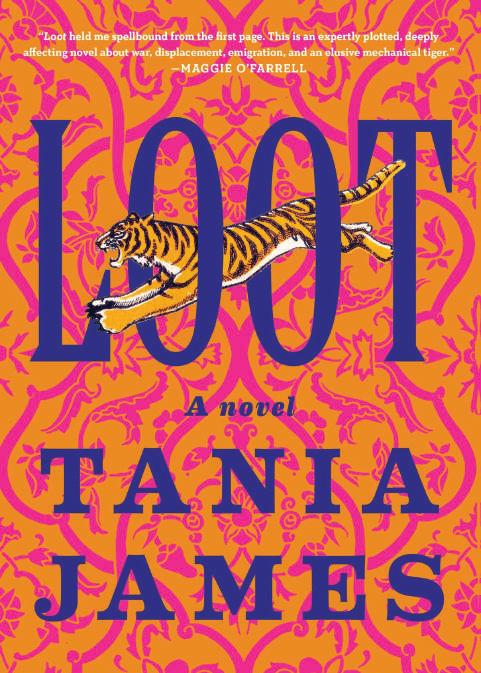



































It’s Independence Day for India and Pakistan this month—what better way to celebrate than by sharing our love of food? In this list, we highlight some of our favorite Indian and Pakistani restaurants from across the U.S.

Sona, New York City
Sona’s chef Hari Nayak has reimagined Indian food and added a New York City touch. This translates to a burrata butter chicken, avocado papdi chaat, and seared mirchi scallops. The menu also features typical Indian fare, with sarson ka saag and a choice of biriyanis. Sona-nyc.com


Zaika, Woburn, Boston
Zaika Indian Bistro just outside Boston has a variety of dishes from across the subcontinent, from Bombay bhel, to Goan vindaloo curry, to Kashmiri rogan josh. Flavorful and prepared with fresh ingredients, Zaika is a reliable choice for a delicious meal. zaikaindianbistro.com
Sabri Nihari, Chicago
The best time to visit this Michelin Award-winning restaurant is on an empty stomach, because there are plenty of delectable Pakistani dishes on offer. Their signature dish Nihari is a hands-down favorite. Other mouthwatering dishes include kunnah paya and chicken boti. sabrinihari.com

Indigo, Washington, DC
When we crave comfort food, Indigo is our go-to place to dine. The restaurant offers classics like chicken tikka masala and palak paneer, along with their signature Indirolls. With a variety of stuffed parathas as well as vegan-friendly options, Indigo remains a steady favorite. indigowdc.com
With different locations across the state, there’s always a reason to visit Mithaas. mithaas.com
From Indian and fusion dishes like chicken 65 to the innovative feta cheese and olive naan, Mint Leaf is our top desi Pasadena eatery for more reasons than one. They have a scrumptious seafood selection, as well as several tofu dishes for those who prefer plant-based diets.
mintleafpasadena.com
With a mix of both Indian and Pakistani dishes, Curryleaf’s extensive menu has something for everyone. Their tandoor churns out succulent lamb and chicken kebabs, while their notable chicken karahi and bhindi masala will make you want to visit again and again.
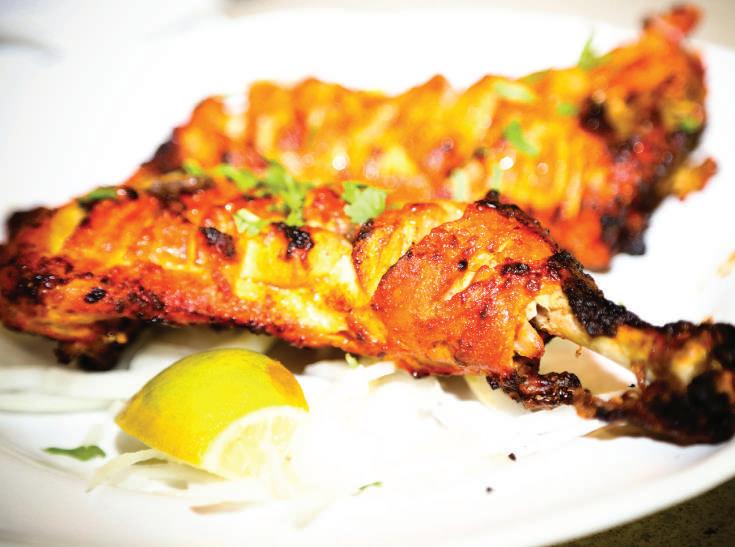

curryleafinsf.com
Mithaas is all about snacks, chaat, and the street food of India. So you can expect everything from pav bhaji to moong dal kachori to chana bhatura to dabeli, plus Indian mains and breads (all vegetarian).

Whip In started as a corner store in the 1980s. A brewery and gastropub with a wide selection of beer and wine, the Indian cuisine restaurant serves curries, biryanis, and tandoori dishes. They also have regularly updated specials featuring local produce, as well as a convenience store. whipin.com
Saffron Indian Kitchen has something for everyone from curries to naan. Enjoy their lamb korma, mint paratha, and vegetable tikka masala along with their homemade pickles. With locations across Pennsylvania, you’re never too far from a tasty Indian meal. saffronofphilly.com


ARIES
March 21April 19
You can be a force to be reckoned with when you embrace your innate strength of focus and unwavering determination to propel you closer to victory. Trust the path you have chosen and stay patient, knowing that success takes time, be it in a relationship or at work. Listen to your intuition and stay grounded no matter what the temptation. Keep an eye on your finances and energy. Both are vital for your growth. Don’t let delays discourage you; your efforts will be rewarded. And, remember, any setback is just stepping stone to success. Take decisive steps towards your health goals, stay committed to your routines and embrace self-discipline. The weeks ahead will present interesting possibilities.
TAURUS
April 20 - May 20
It seems like the weight of responsibility is heavy on your shoulders right now, and it’s natural to feel a hint of resentment. Here’s the thing: there’s more power and peace in delegation. Your victory depends on it. In love, if there’s an imbalance in the relationship, with one person carrying all the responsibility, it’s time to address it. Shouldering the weight of the world alone will only lead to a breakdown. The possibility of a move, whether it’s a new home, job, or travel adventure, is quite likely. Nothing

can stand in your way when it comes to achieving your goals, so buckle up and hit the ground running. Take a moment to prioritize your well-being.
May 21 - June 20
As you embark on the exciting journey with new dreams and visions, get ready to make those tough decisions and stay focused on your main goal. Brush off the annoying monkey on your shoulder of worries, drama, and politics. Consider recommitting to projects or relationships, leaving behind excuses, and embracing the upcoming attention and success that await you. It’s a great time to explore new places, move to a different location, or treat yourself to a new set of wheels. Your hard work will pay off. And don’t forget to tap into your intuition for that much-needed clarity as you navigate this exciting journey to success. Trust your instincts.
June 21 - July 22
All your hard work and dedication is likely to be rewarded. It’s a magical time when your wishes come true, so be intentional about what you ask for. Be prepared for interesting opportunities knocking at your door. Surprises are in store for you perhaps even forgotten money will find its way back to you. Surround yourself with people who uplift and inspire you. Continue investing in your present while working towards that
next big goal. Trust your intuition, release any stagnant energies, and let go of worries that hold you back. Remember, to take a moment to appreciate the abundance in your life. Even when things may seem modest, you’ll realize you have more than you initially thought.
LEO
July 23August 22
Life presents us with tough choices, and they don’t always come with easy answers. But here’s the scoop: make your decisions with good intentions, fully aware of the potential outcomes. Ignoring problems won’t do you any favors in your career or relationships. It will lead to more conflict and a sense of being stuck. So, listen to both your logical mind and your heartfelt intuition. In relationships, aim for balance now more than ever. Before making financial moves, gather all the facts. Now is the time to go with surety, slowness and ease. Your victory comes when you face challenges head-on and embrace the wisdom that resides within you.
VIRGO
Aug 23 - Sept 22
Life is a captivating journey of opportunities, embrace new projects and ventures that cross your path. Take moments for self-care, while keeping an eye on that extra helping at dinner. Trust your instincts with money, and don hope and dreams like a vibrant sun dress. Positive shifts await in relationships, whether
discovering a new love or deepening commitment. Treasure these romantic moments. Prepare for a social month, reuniting with old friends. In the workplace, expect movement and creative sparks. Your positive mindset, and genuine kindness will fuel professional growth but remember to find balance along the way. Enjoy the journey and savor the delightful surprises along the way.
LIBRA
Sept 23 - Oct 22
You are filled with enthusiasm to embark on new projects and ideas, despite potential setbacks, this month.
If anything feels overwhelming, be honest and don’t ignore problems; address them before they grow bigger. Steer clear of any gossip, drama pointless fights or arguments, focusing on positive energy instead. Be cautious at work and approach relationships with more tact and gentleness. Your communication tone matters. If you have been wishing for a relationship, it will take longer than you anticipate so be patient. Financial freedom is within reach, however curb any kind of impulsiveness to get rich quick. Be humble and open to financial advice. Trust that good things are coming your way.
Oct 23 - Nov 21
Embrace the unfolding shifts and seize new opportunities with unwavering determination.
If you feel trapped in any emotional dynamics that hinder your growth, gather the courage to take a leap of faith and initiate change. Make peace with your past and free yourself from unhealthy beliefs and attachments. Take a moment to reassess how you approach relationships, finances, core values and your priorities and prepare for change. Although certain circum-
stances may seem uncomfortable or disappointing at first, trust that they will lead to personal victory and growth. Begin putting the wheels in motion and be patient, resilient and focused. It’s your time to shine and seize success. Get ready!
Nov 22 - Dec 21
Brace yourself for a splash of pure magic in your life as you manifest your dreams into reality. It is time to use your exceptional talents and skills, to kickstart your plans and goals with unshakable optimism. Be open to new roles, exciting ventures, intriguing assignments, and even the possibility of a thrilling move. It may pave the way for financial abundance to flow your way. If you’re seeking love, don’t let precious time slip away. Steer clear of the urge to manipulate or control others; instead, focus on nurturing relationships. Allow your creativity to soar. The world is yours for the taking. How ready and willing, are you?
Dec 22 - Jan 19
Embrace new experiences and expand your horizons. Your hard work has brought you here, and as you move forward, keep your long-term goals in focus. Stay committed and passionately pursue the plans that ignite your soul. Trust in the power of faith and shrug the comfort zones, to guide you to triumph. Exciting news from abroad or global opportunities awaits you, personally and/or professionally. In love, reignite the spark of those courtship days. If a relationship no longer fulfills you, reassess its place in your life. Seek balance, patience, and collaboration, valuing the journey as much as the end result. Approach financial decisions with caution. Consider investing any available funds in savings for future stability.
Jan 20 - Feb 20
You have what it takes, so step up and make it happen! Be the architect of your destiny and make your dreams come alive. At work, take calculated risks and consider a move or change that excites you. Make sure you have a solid plan in place and face any challenge with unwavering optimism. Visualize your victory and believe in your ability to achieve it. On the financial front, think long-term and avoid impulse decisions and frivolous spends that could drain your wallet. If your relationship lacks luster, it’s time to reignite the flame of passion. In love, your ideal partner won’t magically appear, so step out of your comfort zone and mingle if you are single.
Feb 21 -
March 20
Get ready to tap into your boundless creative energy and become more attuned to your innermost feelings. Your choices have the power to influence those around you, so wield them, wisely. Use tact and sound judgment to handle any professional conflicts, at work to propel your victory. In matters of finance, rely on your wisdom and keep your strategies close to your chest. In love, anticipate a relationship that embodies responsibility, trust, and unwavering support and set healthy emotional boundaries. While chasing your goals, remember to weave moments of rest with a book, music, meditation, or writing - whatever brings you solace. Embrace your wisdom, and let it guide you on this transformative expedition.
Farzana Suri is a victory coach who coaches people through their life’s challenges to take the leap to victory, using the science of numerology. For a personalized forecast, you may contact Farzana at surifarzana@gmail. com or visit her website www.farzanasuri.com
